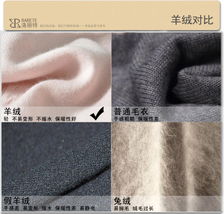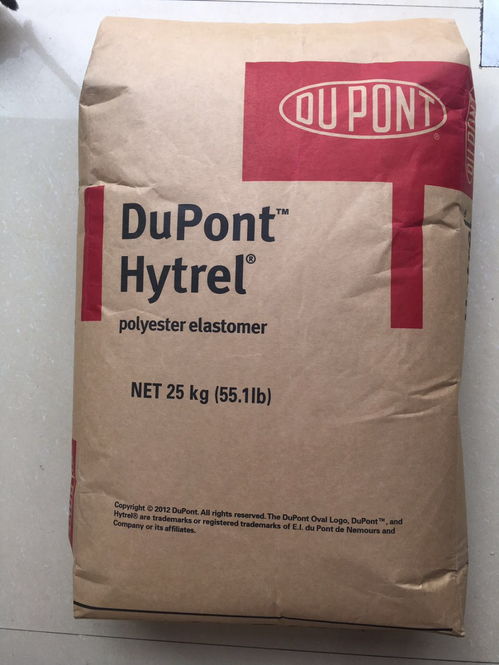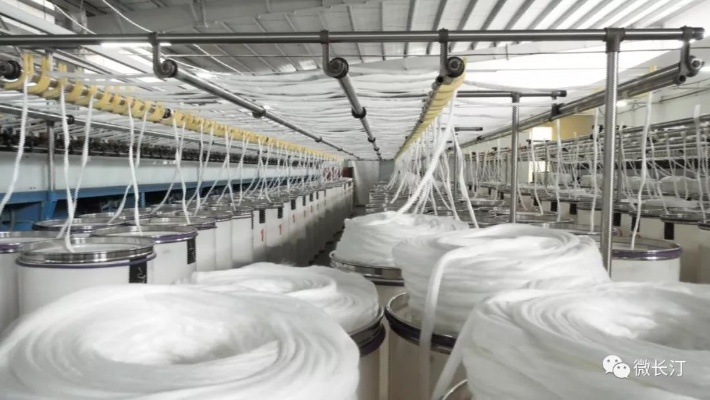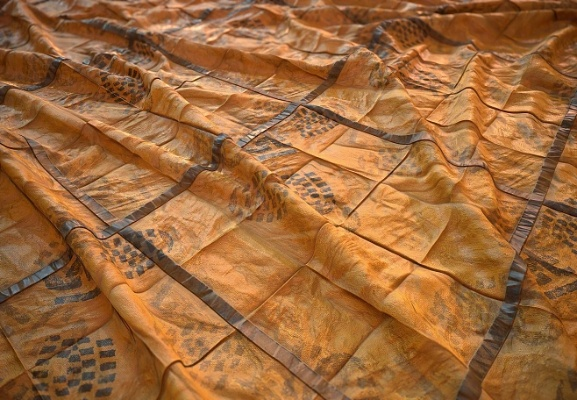The Rise of Textile Innovations in the Global Marketplace
The global textile market has witnessed a surge in innovations that have transformed the industry. With advancements in technology, materials, and manufacturing processes, textile companies are now able to produce high-quality products that cater to diverse customer preferences. The rise of sustainable practices in textile production has also gained momentum, with many brands embracing eco-friendly materials and processes to reduce their environmental impact. Additionally, digitalization is transforming the industry by enabling businesses to streamline their supply chain, improve efficiency, and enhance customer engagement through online platforms. The integration of artificial intelligence and machine learning is also playing an essential role in enhancing the accuracy and speed of product design and manufacturing. As such, the textile industry is set for further growth and expansion, driven by innovation, sustainability, and technological advancements.
In today's fast-paced world, textiles have become an integral part of our lives. From everyday wear to high-end fashion, textiles play a significant role in shaping our perception of beauty and functionality. With advancements in technology and consumer demand, the textile industry is constantly evolving, introducing new materials, designs, and production methods that cater to diverse preferences and market demands. In this article, we will explore some of the key trends shaping the global textile market, including sustainable practices, digital transformation, and innovation in textile design.
Sustainable Practices: The Shift towards Eco-friendly Textiles

As consumers become more conscious of their environmental impact, the textile industry has embraced sustainable practices to meet their growing demand for eco-friendly products. This shift towards sustainability has led to the development of innovative textile materials and processes that reduce waste, minimize water usage, and use renewable resources. For instance, organic cotton, which is grown without the use of harmful pesticides, has gained popularity due to its soft texture and breathability. Similarly, bamboo fabric, made from renewable bamboo fibers, is gaining traction as it is biodegradable and reduces greenhouse gas emissions.
Digital Transformation: Streamlining Production and Enhancing Customer Experience
The textile industry is undergoing a digital transformation, with companies adopting advanced technologies to streamline production and enhance customer experiences. One such technology is the use of artificial intelligence (AI) in inventory management, which helps companies optimize their supply chain and reduce costs. AI can also be used to analyze customer data to personalize marketing campaigns and recommend products based on their preferences.
Another area where digital transformation is playing a crucial role is in the design and manufacturing process. With the help of 3D printing technology, manufacturers are now able to create intricate patterns and designs that were previously impossible to achieve. This not only saves time and resources but also allows for customized products that meet specific customer requirements.
Innovation in Textile Design: Embracing Creativity and Customization
In recent years, the textile industry has seen a surge in innovation in terms of design and customization. Companies are now offering a wider range of options for customers, allowing them to express their individuality through unique patterns, colors, and textures. For example, there are now many types of printed fabrics available, ranging from traditional block prints to modern abstract designs.
Moreover, social media platforms have played a significant role in promoting these innovative designs. Brands are using Instagram stories and Facebook live sessions to showcase their latest collections and share behind-the-scenes footage of their creative process. This not only attracts new customers but also builds brand loyalty among existing ones.
Case Study: The Rise of Sustainable Fashion
One company that has successfully integrated sustainable practices into their textile business is Patagonia. The company was founded in 1973 by Yvon Chouinard, who wanted to create clothing that would protect people from harm caused by climate change. Today, Patagonia produces clothing made from recycled materials, such as Tencel, a plant-based fiber derived from wood pulp. The company also encourages customers to repair their clothes rather than buying new ones, reducing waste and promoting longevity.
Patagonia's commitment to sustainability has not only helped them win over environmentally conscious consumers but also boosted their brand image and revenue. According to a report by the Ellen MacArthur Foundation, Patagonia's net income increased by 50% between 2018 and 2019, thanks in part to their sustainable practices.
Conclusion: The Future of Textiles
As the textile industry continues to evolve, it is clear that sustainable practices, digital transformation, and innovation in design will continue to drive growth in the industry. By embracing these trends, companies can not only stay ahead of the competition but also meet the changing needs and preferences of their customers. As we move forward, it is likely that textiles will become even more personalized, sustainable, and technologically advanced, shaping the future of fashion and beyond.

丈青纺织品概述
丈青纺织品是一种传统的手工艺品,以其独特的色彩和工艺而闻名,它不仅是一种装饰品,更是中华文化的瑰宝,在今天的市场上,丈青纺织品以其优雅、高贵、质朴的特点深受消费者喜爱。
丈青纺织品的制作工艺
- 原料选择:丈青纺织品的主要原料是优质棉麻,经过精细的纺织工艺制成。
- 织造过程:丈青纺织品采用传统的织造工艺,包括挑花、织布、刺绣等步骤,每一道工序都需要精湛的技艺和经验。
- 染色工艺:丈青纺织品的染色工艺独特,采用天然染料进行染色,确保色彩的纯正和持久性。
丈青纺织品的市场表现
近年来,丈青纺织品在国内外市场上表现抢眼,在国内市场,丈青纺织品因其独特的设计和高品质而备受青睐,在国际市场上,丈青纺织品也因其优雅、高贵的特点受到了广泛的认可和追捧。
案例分析:丈青纺织品的应用场景
- 家居装饰:丈青纺织品在家居装饰中有着广泛的应用,它可以作为窗帘、床单、桌布等家居用品,为家庭增添一份优雅和高贵的气息。
- 礼品赠送:丈青纺织品也是礼品赠送的好选择,它可以作为礼物送给亲朋好友,表达自己的心意和祝福。
- 文化艺术活动:丈青纺织品在文化艺术活动中也有着重要的应用,它可以作为艺术品展示,传承和弘扬中华文化。
丈青纺织品的市场趋势
- 环保趋势:随着人们对环保意识的提高,丈青纺织品的环保趋势越来越明显,越来越多的消费者开始选择环保、可持续的丈青纺织品。
- 高端化趋势:随着消费者对高品质生活的追求,丈青纺织品的高端化趋势越来越明显,越来越多的品牌开始推出高端、定制的丈青纺织品,满足消费者的个性化需求。
- 文化传承趋势:丈青纺织品的文化传承趋势也越来越明显,越来越多的商家开始注重传承和弘扬中华文化,将传统工艺与现代设计相结合,推出具有中华特色的丈青纺织品。
丈青纺织品的市场推广策略
- 品牌推广:通过广告、宣传册、社交媒体等多种渠道进行品牌推广,提高丈青纺织品的知名度和美誉度。
- 产品创新:不断推出新的产品款式和颜色,满足消费者的不同需求和喜好。
- 合作推广:与设计师、艺术家、文化机构等合作推广,共同推广丈青纺织品的文化内涵和艺术价值。
丈青纺织品是一种具有独特魅力和文化内涵的手工艺品,其制作工艺和市场需求都在不断增长,在未来的市场中,丈青纺织品将继续受到消费者的喜爱和追捧,同时也会面临更多的机遇和挑战,我们应该继续传承和弘扬中华文化,推广丈青纺织品,让更多的人了解和喜爱这种传统的手工艺品。
Articles related to the knowledge points of this article:
The Art of Fiber Technology:Transforming the World of Textiles



